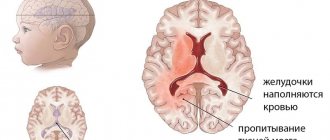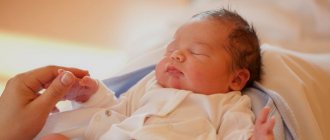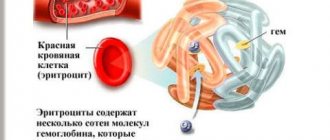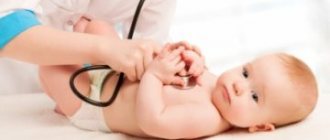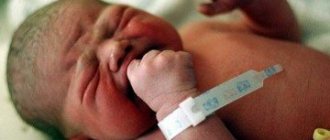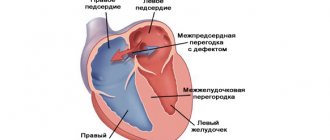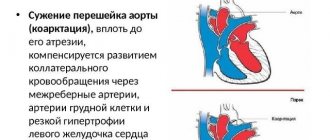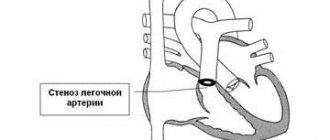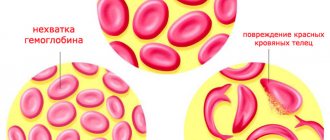Statistics
Stroke is considered to be a disease of older people: according to statistics, 7.3%-10.5% of men and women aged 70-80 years suffer from this disease. Children are less likely to receive this diagnosis because they are less exposed to the risk factors associated with its occurrence.
Most often, a stroke in a child occurs in the prenatal or early neonatal period: 1 case in 4000 newborns. Children under 3 years of age have an increased risk of developing pathology, accounting for 38% of the total number of diagnosed strokes.
Boys are more likely to suffer from this problem; in girls, the risk of developing the disease increases during adolescence. Preschoolers and adolescents have fewer strokes than infants: 1-2 per 100,000 people.
Varieties
A stroke is a disruption of the blood supply to the brain, leading to the death of cells that are not supplied with oxygen and other substances. Without them, cells can survive from 2 to 6 minutes, after which their functionality cannot be restored. The defeat leads to disturbances in the functioning of the body and loss of functions for which the dead cells were responsible.
The cause of occurrence determines 2 types of stroke:
- ischemic;
- hemorrhagic.
Hemorrhagic stroke in children occurs due to cerebral hemorrhage as a result of ruptures in the walls of blood vessels. This immediately leads to two consequences: blood stops flowing to the severed areas of the brain, and the hematoma formed at the site of the rupture puts pressure on nearby vessels and tissues.
The manifestation of an ischemic stroke is tissue bleeding that occurs due to blood clots that clog the lumens of the brain vessels. As a result, blood stops flowing to the cells or its quantity is insufficient to continue normal functioning.
Based on the time of occurrence, childhood strokes are divided into 3 periods:
- intrauterine, or fetal;
- stroke of a newborn, or perinatal, - from the first days of life to 1 month;
- juvenile type - from 1 month to 18 years.
What to do
The first three hours after the onset of symptoms similar to a stroke in children is the time when the medical care and treatment provided will give the maximum result. Parents need to remember this by acting promptly and in a timely manner. A few simple steps to help identify a stroke:
- Pay attention to the smile - is it symmetrical, does it look natural. If the baby smiles on only one half of his face, this is the first sign of a possible stroke.
- Ask the child to raise his arms up: if there is weakness in one of the limbs, the inability to perform this action is the second sign
- Say a sentence and ask them to reproduce it. At the same time, pay attention to whether the baby completely repeated what he heard, whether there is a speech disorder or slurredness. If he failed the task or had difficulty pronouncing, this is the third sign of a possible stroke.
Remember that every parent has the power to help their child at the initial stage of ICD. It is necessary to be careful and, in case of manifestation of the above-described signs, namely, symptoms of stroke in children, immediately seek qualified help.
Causes
Perinatal and fetal strokes may depend on the mother's lifestyle, her health status and the course of pregnancy.
Among the main risk factors in this case are:
- smoking, maternal use of drugs and alcohol;
- chronic hypertension, frequent crises;
- placental abruption at different stages, due to which the fetus felt a lack of oxygen;
- diabetes;
- infectious diseases of various types;
- rupture of the membranes before the onset of labor, which resulted in earlier rupture of amniotic fluid.
Newborns often suffer as a result of birth injuries, manifestations of congenital and acquired diseases in the first days of life. In adolescents, the causes of strokes include traumatic brain injuries, high psycho-emotional stress and drug use.
Risk factors in newborns
The causes of stroke in infants are often associated with congenital pathologies and the course of labor. This group accounts for more than 30% of all childhood strokes.
Among the main causes of the disease in children are:
- injuries to the brain, skull, and cervical vertebrae received during childbirth;
- intrauterine infections and fetal hypoxia, pathologies of various origins during pregnancy;
- difficult and long labor that caused hypoxia;
- neoblastic processes;
- early or late birth;
- compression of the spinal artery;
- bacterial endocarditis;
- Wergolf's disease, diseases associated with blood clotting processes and leading to the formation of blood clots;
- genetically transmitted diseases, including Moya-Moya disease, which manifests itself in narrowing of the intracranial arteries;
- sickle cell anemia, which is more common in children with dark skin color;
- cerebral ischemia;
- meningitis, neuroinfections, chickenpox, which increases the risk of stroke by 3 times.
Risk factors in preschoolers
In preschool children, the disease is less common. In children over 3 years of age, one of the main causes of ischemic stroke is blood diseases, which, according to various sources, affect from 15% to 50% of children. Increased activity of a child at this age causes head and neck injuries, which can cause a stroke.
Other reasons include:
- TBI, often after a fall;
- acute poisoning;
- vitamin deficiency, deficiency of iron and vitamin C;
- first manifestations of arterial hypertension;
- blood diseases, including aplastic anemia and leukemia;
- endocarditis;
- vasculitis;
- aneurysms.
The causes of ischemic circulatory disorders are called:
- diabetes;
- severe dehydration leading to blood thickening;
- viruses affecting blood vessels, inflammation of the meninges and brain;
- congenital heart disease or its valves, cerebral vascular pathologies, arteriovenous malformation;
- oncological diseases;
- autoimmune and metabolic diseases.
Teenagers are the most protected category of children. The causes of problems with impaired blood supply to the brain described above occur less frequently in them. Risk factors at this age include high rates of injury, use of illegal and harmful drugs, high emotional stress and nervous strain.
Consequences
Children have a better chance of overcoming and minimizing the effects of devastating brain injury. A newborn baby receives 100 billion nerve cells. In childhood, if the brain is injured, the remaining neurons easily restore connections, replacing dead cells and returning lost functions. In addition, nerve tissue transplantation operations are now being successfully carried out; Promising research is underway to regenerate damaged brain centers. Hope must not die, even if the most dire consequences are promised.
- Paralysis or significant limitation of movement. It happens that constant exercise therapy restores lost functions within a year or two;
- Problems with speech, swallowing, vision. Help from a speech therapist and vision training can negate the negative effects;
- Emotional changes. Patience and faith in the child himself are required;
- Brain injuries lead to memory loss and mental retardation. But nothing can develop a child more than communication with parents;
- The recovery period usually lasts up to two years, but it is possible that the consequences of a stroke will remain for many years.
How does the disease manifest itself?
Symptoms of problems with blood supply to the brain are the same in children and adults. The difficulty of timely diagnosis lies in the fact that infants are not capable of full communication. Unlike adults, whose symptoms are immediately visible, children cannot explain their feelings, which makes it difficult to make a diagnosis.
The problem becomes more complex in newborns, whose response to stroke is similar to that of external stimuli. It is important for parents to carefully monitor the behavior of a child of any age and, at the first suspicion of a stroke, call an ambulance, since delay can have consequences for the baby’s health.
When to suspect a child is having a stroke
Often, signs of vascular pathologies in young children go unnoticed because they pass without symptomatic manifestations.
In order not to miss the onset of the disease, you should pay close attention to the appearance of the following signs in the child’s behavior:
- severe headache, dizziness, visual and hearing impairment, loss of consciousness;
- causeless nausea and vomiting;
- when smiling, the corners of the lips rise only on one part of the face;
- coordination of movements is impaired: when you try to raise both hands in front of you, one will not obey;
- speech becomes inarticulate, reactions become inhibited, consciousness becomes confused;
- one of the eyes may begin to squint, and a sharp deterioration in vision is detected.
4 main symptoms
Among the mass of accompanying manifestations, 4 main symptoms of childhood stroke can be distinguished:
- Complete or partial paralysis of the limbs, in most cases the inability to move an arm or leg on one side, sagging of the right or left half of the body, impaired coordination.
- Signs of fog and confusion, stupor, and in severe cases - coma.
- In older children - speech impairment, distortion of words, inability to repeat entire sentences, slurred and inhibited speech.
- Sharp and repeated cramps in the limbs, muscle tension in the back of the head and neck.
Other symptoms
The complexity and severity of symptoms will depend on the type of stroke, the location of the lesion, and the degree of vascular damage.
In combination with the main manifestations, the following may occur:
- memory loss;
- deviation of hearing and tactile perception;
- nystagmus, sharp dilation of the pupil to the edges of the iris without reaction to light, loss of fragments from the field of vision;
- lethargy, lack of motivation, frequent mood swings;
- sudden involuntary movements of body parts, lack of coordination;
- paralysis of limbs.
With hemorrhage in the brain, a sudden loss of consciousness, meningeal and cerebral symptoms are possible. Ischemic damage will have primarily neurological manifestations.
Features in children in the first months of life
It is especially difficult to diagnose blood supply disorders in the brain in newborns and children in the first months of life. This is because the symptoms of the disease can be confused with other conditions. The situation is complicated by the fact that hemorrhages in infants can be extensive, leading to irreversible consequences if treatment was incorrect or untimely.
In this regard, special attention should be paid to the appearance of the following symptoms in the first months of a child’s life:
- breathing problems: frequent or intermittent, even stopping;
- tension in the back of the head;
- convulsive manifestations;
- sagging of one part of the body;
- frequent regurgitation, problems with swallowing, vomiting, impaired sucking reflex;
- movements with only one leg or arm;
- increased anxiety, restlessness, sharp reaction to any irritants, including touching, loud sounds, bright light;
- lack of sleep;
- sudden mood swings, lethargy, or excessive, incessant crying;
- visual disturbances, sudden appearance of signs of squinting eyes, lack of focusing.
It is important to closely monitor the child’s condition in the first days and months of life and, if symptoms appear, insist on additional examinations.
Juvenile stroke in newborns
Stroke in children is considered perhaps the most common pathology among young patients. Acute cerebral ischemia in a newborn (juvenile stroke) is consistently among the top three in frequency of occurrence in pediatric patients. There is a direct correlation between a child's weight and the likelihood of a stroke.
Thus, among children of normal weight, the frequency of hemorrhages is 10%, children weighing less than one and a half kilograms risk brain damage in 35-40% of cases. The greatest risk is for premature newborns weighing less than 1 kg, in whom strokes occur in 100% of cases. Moreover, juvenile stroke is considered the most common cause of death in premature infants.
Causes
The formation of micro-stroke and cerebral ischemia in newborns is associated with a number of factors:
- Head injuries received during fetal development.
- Compression of the basilar arteries (for this reason, cerebral ischemia often develops in a newborn).
- Infections in the prenatal period.
- Excessive blood circulation can also lead to cerebral hemorrhage in a newborn.
- Formation of aneurysms of the great vessels.
- Heart defects.
- Disturbances in the development of cerebral structures. Including transposition of the great vessels in newborns, which is characterized by incorrect arrangement of veins and arteries.
- Ischemia in newborns can be caused by neuroinfections.
- Neoplastic processes in the brain. First of all, tumors, choroid plexus cyst in a newborn. Cause compression and infiltration of brain tissue. Cysts of the choroid plexus of the brain are observed with a frequency of 1-3% of all observations in neurology.
- Development of malformations (fusions of veins and arteries).
- Hypoxia. Intrauterine oxygen deprivation leads to hypertension in children (hypertension; normal pressure in children is 60/40 mm Hg). The blood vessels of infants are fragile and have low tone, which is why cerebral hemorrhage often occurs in newborns.
Hypoxic-ischemic brain damage in newborns does not always lead to stroke, but increases the risk of its occurrence in the future.
- Blood clotting deficiency.
- Hypothermia.
- Low blood sugar.
- Hydrocephalus (intracranial pressure in children is often caused by increased production of cerebrospinal fluid).
- Medical errors (incorrect delivery).
- Difficult birth.
Cerebral ischemia in newborns is additionally caused by endocrine pathologies (diabetes mellitus, hypothalamic syndrome), toxic vascular lesions, etc. The most common occurrence in children is hemorrhagic stroke (about 70%). The remaining 30% is due to ischemic stroke.
Photo of a cyst in the brain
Classification
All hemorrhages can be divided depending on the location of the pathological process.
- Hemorrhage into the ventricles of the brain. IVH is the most common condition in newborns. The main risk group is premature infants. In this case, the blood flows directly into the cerebral tissue. If a vessel ruptures in an area filled with cerebrospinal fluid, blood flows into the ventricles of the brain.
- Epidural hemorrhage. If intraventricular hemorrhage in newborns affects deep-lying cerebral structures, in this case the vessels located between the skull and the outer regions of the brain are affected. Caused by traumatic brain injuries.
- Subarachnoid hemorrhage. Develops between internal cerebral structures and brain matter. Aneurysm rupture, TBI, these are just some of the possible causes of such hemorrhage in a newborn.
- Subdural strokes in children. Bleeding forms between the soft and hard membranes of the brain. Caused by difficult labor and hypoxia.
A stroke is preceded by a condition called cerebral ischemia. In children it is aggressive and progresses rapidly. There are three stages of the pathological process:
- Cerebral ischemia stage 1 . Compensated stage. Characterized by reversible changes in blood vessels. At this stage, a narrowing of the veins and arteries of the brain occurs.
- Ischemia of the 2nd degree in a newborn. Stenosis of the great vessels becomes persistent and pronounced.
- Ischemia stage 3. This stage is characterized by the development of many microhemorrhages (microstrokes). The third stage precedes a full-blown stroke.
If cerebrovascular accident in children is caused by injuries, infections, or rupture of an aneurysm, we are talking about a hemorrhagic stroke. Ischemia does not develop or acts as a secondary symptom (complication) during the rehabilitation period.
Symptoms
The symptoms of stroke and micro-stroke in a child are largely similar. Neurological manifestations come to the fore:
- Strabismus, rapid eye movements (nystagmus), rolling of the eyeballs.
- Hyperthermia or instability of body temperature (indicates the involvement of the hypothalamic nuclei in the process).
- Tremor of limbs, convulsions.
- Hyper- or hypotonicity of muscles.
- Violations of the autonomic functions of the body (changes in heart rate, breathing, these are ominous signs, more often observed when deep structures of the brain are damaged).
- Fall in blood pressure.
- Hearing impairment.
Other focal symptoms from the speech apparatus, muscular system, organs of the excretory system, etc. are also observed. In many ways, the symptoms of stroke and microstroke in newborns are similar to cerebral infarction in adult patients. In addition to neurological symptoms, general cerebral signs are also noted:
- Nausea.
- Vomit.
- Vertigo (child feels dizzy).
- Headache.
If we have to talk about the development of a disease in an infant, the baby’s subjective feelings can be identified by a number of external manifestations:
- Tense face.
- Constant crying.
- Changing the intensity of the voice, its volume.
- A bright, pronounced reaction to a minimal external stimulus (sound, light, smell).
- Excessive tension in the neck muscles.
- Paleness of the skin.
- Apnea.
- Lethargy, drowsiness of the baby.
- Frequent regurgitation.
With a microstroke, the clinical picture is similar, with the only difference being that the duration of manifestations is from a minute to a day. Full-fledged acute cerebral ischemia is characterized by a duration of over 24 hours.
Diagnostics
Diagnosis and treatment are carried out by neurologists and neurosurgeons. A comprehensive examination of a young patient is required:
- MRI/CT. It is considered the “gold standard” in diagnosing lesions of cerebral structures.
- Encephalography.
- Dopplerography of blood vessels.
- Angiography of blood vessels.
- Neurosonography.
- Lumbar puncture (if indicated).
- Blood tests (general and biochemical).
These studies, together with the initial examination and functional tests, are sufficient to make a correct diagnosis.
Treatment
Therapy is aimed at solving several problems: relief of cerebral and focal symptoms, elimination of bleeding.
It is important to start treatment within the first six hours, as massive neuronal death occurs over a longer period of time.
Therapy can be conservative or, in the most severe cases, neurosurgical. Conservative involves taking certain groups of medications:
- Diuretics (for cerebral edema).
- Hemostatic agents (Vikasol, Etamzilat, to stop bleeding in case of poor clotting).
- Phenobarbital for seizures.
- Nootropic drugs (during the rehabilitation period).
- Regenerative medicines (electrolytes, potassium chloride, magnesium sulfate, etc.).
Neurosurgical therapy is required in almost half of the cases. Includes minimally invasive techniques:
- Lumbar puncture.
- Ventricular puncture.
- Blood suction.
The effectiveness of surgical treatment is 35-40% of clinical cases.
Complications
The consequences of cerebral hemorrhage in newborns can be dire. This includes:
- Persistent focal impairments (speech, hearing, vision, motor activity, etc.).
- Cerebral palsy.
- Mental retardation.
- Behavioral problems.
- Death.
- Hydrocephalus.
First aid
Help for a newborn is required in the first minutes after the development of acute ischemia:
- Place baby face up with knees bent.
- Raise your head.
- Provide oxygen flow.
- Remove tight clothing.
- Turn your head to the side (if vomiting starts).
- Call a team of doctors immediately.
- Prepare for resuscitation measures.
Rehabilitation
Upon completion of the main treatment measures, the following are indicated:
The recovery program is developed individually, based on the type of stroke, the severity of the process, and the general health of the young patient.
Hemorrhagic stroke in children is more aggressive than in adults. Diagnosis and treatment of brain lesions in children are associated with a number of difficulties due to the fragility of the infant body.
An integrated approach is required, and therapy should begin as early as possible. This is the only way to ensure a favorable outcome of the disease.
Loading…
Source: https://MedBoli.ru/insult/vidy-insulta/yuvenalnyj-insult-u-novorozhdennyh
Periods
There are 5 periods of the disease:
- Acute - maximum manifestation during the first 3 hours. It is stored for up to 3 days from the date of the incident. The most important stage for diagnosing and eliminating manifestations: timely treatment can reduce the consequences to a minimum.
- Acute - from 4 to 14 days. Aimed at reducing the risk of relapse, eliminating cerebral edema, normalizing the state of the blood, the functioning of the heart and blood vessels.
- Early recovery – up to 6 months. Complex therapy to eliminate the consequences, increase the sensitivity of damaged areas, and normalize speech.
- Late recovery - from 6 months to a year. Restoration of all possible functions, continuation of rehabilitation measures.
- The period of residual effects is up to 2 years. Working on complex consequences, following recommendations and carrying out preventive measures.
The main danger of a stroke in the prenatal period is the impossibility of recognizing it before birth. If the damage to the blood vessels of the child’s brain during the mother’s pregnancy was extensive, the consequences may affect the development of motor skills, psycho-emotional state, motor activity, and manifest themselves in developmental delay.
Diagnostics
The clinical manifestations of childhood strokes can be blurred, so doctors prefer to rely on instrumental methods.
If, upon examination by a pediatrician, neurologist, neonatologist or neurosurgeon, there is a suspicion of a stroke, the following studies are performed:
- blood for coagulation, inflammatory processes, biochemistry;
- in infants: ultrasound through the fontanel;
- on days 3-5 MRI or CT;
- angiographic method with the introduction of contrast is one of the most accurate;
- duplex scanning of arteries and veins;
- if other options are impossible or inaccurate, a spinal puncture is performed to detect hemorrhage.
Differential diagnosis
The absence of clear manifestations of ischemia and cerebral hemorrhages in newborns makes it difficult to identify and correctly define the disease, so a third of cases go unnoticed or are misdiagnosed.
Symptoms of a stroke may be similar to those of diseases such as:
- brain tumor;
- abscess;
- complicated migraine;
- juvenile Parkinson's disease;
- liver poisoning;
- subdural hematoma;
- infections of some types;
- Todd's palsy, encephalitis, neurological diseases.
The final picture can only be provided by studies of fluids and organs carried out using specialized medical equipment.
Symptoms and signs
All clinical manifestations of childhood strokes in most cases do not differ from the typical signs of cerebral infarction or hemorrhagic stroke in adults, but their diagnosis is difficult, especially in young children. Children cannot clearly describe their sensations, and parents and relatives often do not pay due attention to the appearance of neurological symptoms in the child. In addition, many practicing doctors - pediatricians, family doctors and pediatric neurologists - today cannot answer the question affirmatively: “do strokes occur in children?”
Therefore, childhood stroke is diagnosed late or not identified, and all clinical symptoms of the disease are explained by other reasons - from overwork of the child to neuroinfections of unknown etiology.
There are also more cases of lacunar or deep small-focal strokes with damage to small penetrating cerebral arteries, which are accompanied by the manifestation of isolated clinical syndromes - motor and sensory stroke without the manifestation of general cerebral symptoms.
Clinical manifestations of juvenile strokes
are:
- sudden temporary difficulties or loss of speech (aphasic variant) with damage to the speech center, verbose and/or incoherent speech, lack of understanding by the baby of the addressed speech of others and his own;
- weakness of the upper or lower limb (hemiparesis or hemiplegia) and/or insensibility and asymmetry of the face, while the child tries not to use one arm, sudden lameness, weakness in the leg, pain may be noted;
- sudden loss of coordination of movements, dizziness, which the baby may not notice;
- sudden deterioration of vision, often in one eye;
- hearing loss, tinnitus;
- sudden changes in the child's mood, behavior, character, memory or mental abilities;
- acute causeless headache, prolonged headache, increased body temperature to high levels (with extensive strokes or damage to thermoregulation centers);
- convulsions, tics;
- impaired bladder and/or bowel control – urinary or fecal incontinence (enuresis, encopresis).
Symptoms of perinatal strokes
appear immediately after birth or in the first three days.
They are characterized by the following symptoms:
- general agitation, constant, often monotonous screaming, sleep disturbance or, conversely, lethargy and apathy of the child;
- violent reaction to any stimuli or sounds;
- regurgitation, problems with sucking and swallowing;
- increased convulsive readiness, tension of the neck muscles;
- decreased tone of the limbs or persistent muscle hypertonicity;
- sudden onset and progression of strabismus.
Treatment
Depending on age, symptoms, diagnostic options and treatment options will vary. It is important to pay attention to changes in the child’s behavior in order to promptly identify a possible stroke. Starting therapy within the first 3 hours after the incident will minimize its consequences.
Only a doctor can prescribe therapy; under no circumstances should you treat a stroke yourself.
If surgery to remove a blood clot is necessary, emergency surgery with the participation of a neurosurgeon is prescribed. In case of severe manifestations and after surgery, the child is transferred to the intensive care unit until the condition stabilizes.
Depending on the type of vascular lesion, drug treatment is prescribed: antithrombosis for ischemia, stopping and restoring blood for hemorrhage.
Drugs are used to normalize blood pressure, improve brain activity, and eliminate symptoms. In the future, rehabilitation treatment in a neurology hospital is required. The final part is rehabilitation in specialized centers and supporting activities at home.
Probability of relapse
Children are 30% more likely to have a recurrent stroke than adults. The risk of relapse is especially high in the first year after recovery. During this period, it is important to follow all doctors’ recommendations and continue treatment, rehabilitation and preventive measures. At the first symptoms of the disease, deterioration and regression, you should immediately seek help.
Most often, relapses occur in children and adolescents with chronic pathologies of the heart and blood vessels, hypertension, and diseases of the circulatory system. If there are no such diseases, and the causes of the first stroke have been eliminated, the risk of recurrence is minimal if all recommendations are followed.
Consequences
Due to the fact that the child’s body is in the stage of active growth and development, stroke is tolerated more easily than in adults. The ability to regenerate and grow promotes the replacement of dead cells and the emergence of new neural connections. In most cases, with proper treatment, a child recovers completely after a stroke.
However, with late diagnosis and incorrect therapy, the following consequences arise:
- Mortality in every 5 cases, the most dangerous in this regard is the hemorrhagic type.
- 10% of children will need constant care.
- In 70% of cases, permanent or temporary disorders are possible in the form of paralysis, developmental retardation, memory loss, disturbances in speech, swallowing, visual or motor functions, neurological diseases, and emotional instability.
Rehabilitation
Rehabilitation after a stroke in children should begin as early as possible. After assessing all neurological disorders and the severity of the disease, the likelihood of early rehabilitation measures is considered. They are carried out according to an individual plan in special rehabilitation departments (centers) and/or at home.
pediatrician Sazonova Olga Ivanovna
Article read: 390
To restore brain function after a stroke, you need:
- The use of medications that improve metabolic processes (antioxidants, vascular drugs and nootropics).
- Classes with a speech therapist. They are needed in case of speech disorders.
- Exercises to train coordination and balance.
- Psychotherapy. Indispensable for depression after a stroke.
- Limiting physical activity.
- Complete nutrition. It is especially important for atherosclerosis. Such children need to exclude fatty foods and dishes from their diet, as well as foods rich in simple carbohydrates. The menu should be dominated by vegetables, herbs, fruits, lean meat and fish, dairy products and grains.
- Gymnastics and massage. Indicated for movement disorders.
- Physiotherapy.
- Spa treatment.
- Water procedures.
- Mechanotherapy.
- Muscle stimulation using electrical current.
Mortality in acute cerebrovascular accident is more than 30%. Proper care for a sick child can improve the health prognosis.
Prevention
To avoid a stroke, it is necessary to regularly examine the child for diseases of the heart, blood and blood vessels. This will make it possible to timely diagnose a predisposition to stroke and prevent its occurrence. To prevent recurrent manifestations, the doctor may prescribe medications with acetylsalicylic acid and heparin.
An important point is the child’s lifestyle and diet.
It is worth regulating his physical activity depending on his state of health, devoting more time to walking in the fresh air, monitoring his sleep and wakefulness: rest should be at least 8 hours daily. A diet based on the absence of fatty foods also helps prevent strokes.
